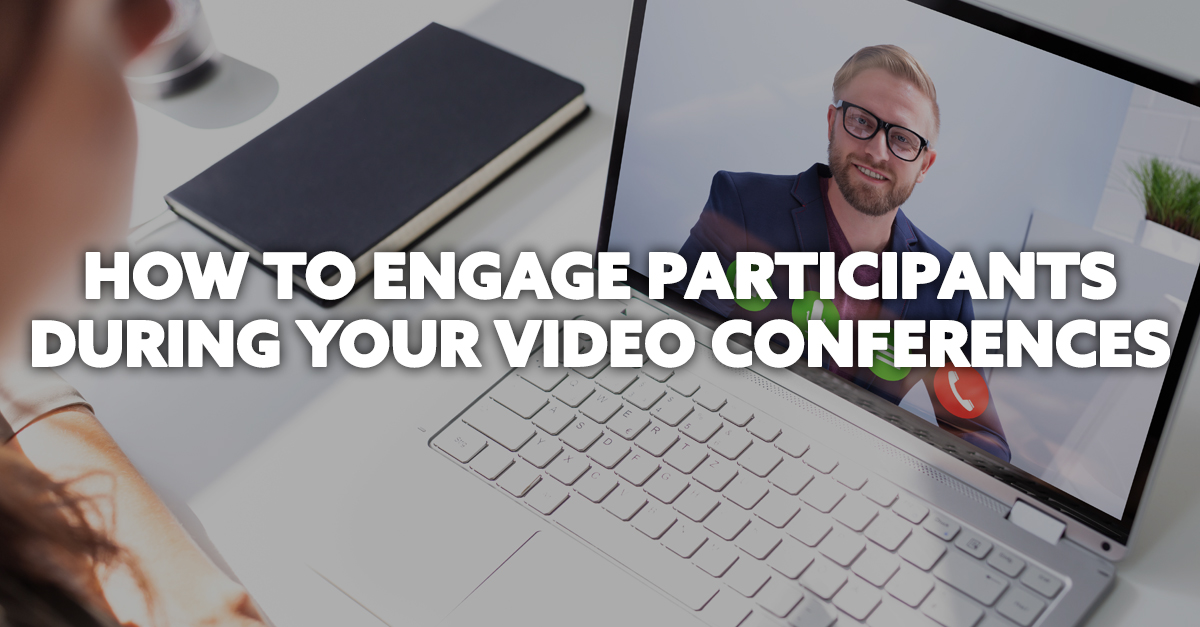With over a decade of broadcast experience, business manager Stevie Brown shares some insight from the world of entertainment, and how we can apply these principals to business video conference calls.
At first glance, television presenters Ant and Dec, Graham Norton, Zoe Ball and Claudia Winkleman probably don’t have much advice to offer businesses during a time of crisis. But during these challenging unprecedented and unusual times, inspiration and best working practices can often come from the most unexpected of sources.
Businesses around the world have had to become video conferencing experts overnight. The adoption of this technology has been widespread allowing us to continue communications with our people and customers, but it’s perhaps worth pausing for a moment to ask if we are making the most of the technology?
According to research by InterCall the answer is no. 82% of employees admitted to being disengaged during virtual meetings, choosing instead to focus on other work, or in some cases non-work distractions while on a call. Clearly we need to adapt to how we communicate through video.
One of the biggest challenges of conference calling is ensuring you attract and maintain the attention of delegates. As people around the world have created makeshift workstations in their kitchen, lounge or spare room, they are in an environment full of distractions, sharing the space with partners, children, pets and flatmates. Clearly attracting full attention is going to be a big ask, but if a meeting is hosted well, completely possible.
This is where we can learn from our favourite seasoned television and radio hosts. Think of common qualities that these individuals show and there will typically be two; they convey warmth and have a captivating presence. As a meeting host we must channel these same qualities. So, how can we apply the tried and tested practices of broadcast to our conference calls?
Audience participation
Normally when we watch a screen we do so passively (watching TV). We need to encourage a shift from passive to active. To help with this, construct your meeting agenda to be as interactive as possible. If you are circulating an agenda ahead of the meeting, make it a series of questions rather than statements. This will help meeting attendees to think and act differently and become more outcome focused. Instead of ‘Miscellaneous Updates,’ try changing it to, ‘what key pieces of information do each of you have to share or need from one another?’
In the world of live broadcast everything is back timed to ensure that the show runs on time. The 12 o’clock news couldn’t happen at 12:07 for example. So we break the show up into segments and assign a specific time for each section. Apply the same logic for your meeting to keep it moving forward and avoid getting stuck on one point for too long.
There is nothing worse than being stuck on a call with someone that is talking around the houses. A producer I once worked with had a rule; don’t open (switch on) the microphone unless you know exactly what you’re going to say; start, middle and end. It’s worth applying the same logic to conference calls to encourage contributors to remain clear and concise.
Show warmth
Much like a chat show host must make their guests feel relaxed to get the best out of them, we need to do the same as a meeting host. Like in real face-to-face meetings it is often nice to start with a light-hearted personal story. Or if you are working from home and have a pet, introduce your furry workmate to the meeting attendees. It’s a great way to help people relax into the call.
We must ensure that the people we are requesting contribute to the meeting feel psychologically safe to do so without fear of being embarrassed, judged or punished. Use open questions to establish a shared language. Questions like; ‘What did you take away from it?’ or ‘What does this mean for you?’. This type of questioning helps people to connect and feel less threatened.
Be aware of non-verbal cues throughout the call. It’s more difficult to observe body language remotely as we can often only see the shoulders and face. Key things to look out for are increased movements (playing with jewellery, hair pens etc.). Pay close attention to any changes in speech tone and pace.
Lights, camera, action
Ahead of the meeting, take some time to set up the camera in a position that is easy for you to look at, ideally just below eye level. If you’re using a laptop, don’t be tempted to leave it on the desk and adjust the angle of the screen. All this will likely achieve is a perfectly framed shot of your nasal cavity, and if we want people to engage, its perhaps not the best image to lead with.
When you are talking, try and look directly at the camera, this is equivalent to eye contact and will help your meeting delegates feel you are engaged with them.
Clarity of message
Be prepared for increased delayed responses during calls. It can be useful to have regular echo back and check in points throughout the meeting to ensure that you and your fellow delegates are all on the same page. At the end of the call summarise key messages and actions to ensure everyone is clear.
The channel
There are plenty of technological platforms for you to base your videoconferences from, including a professional set up from the likes of Kinly to readily available tech including Zoom, Skype and Microsoft Teams.
